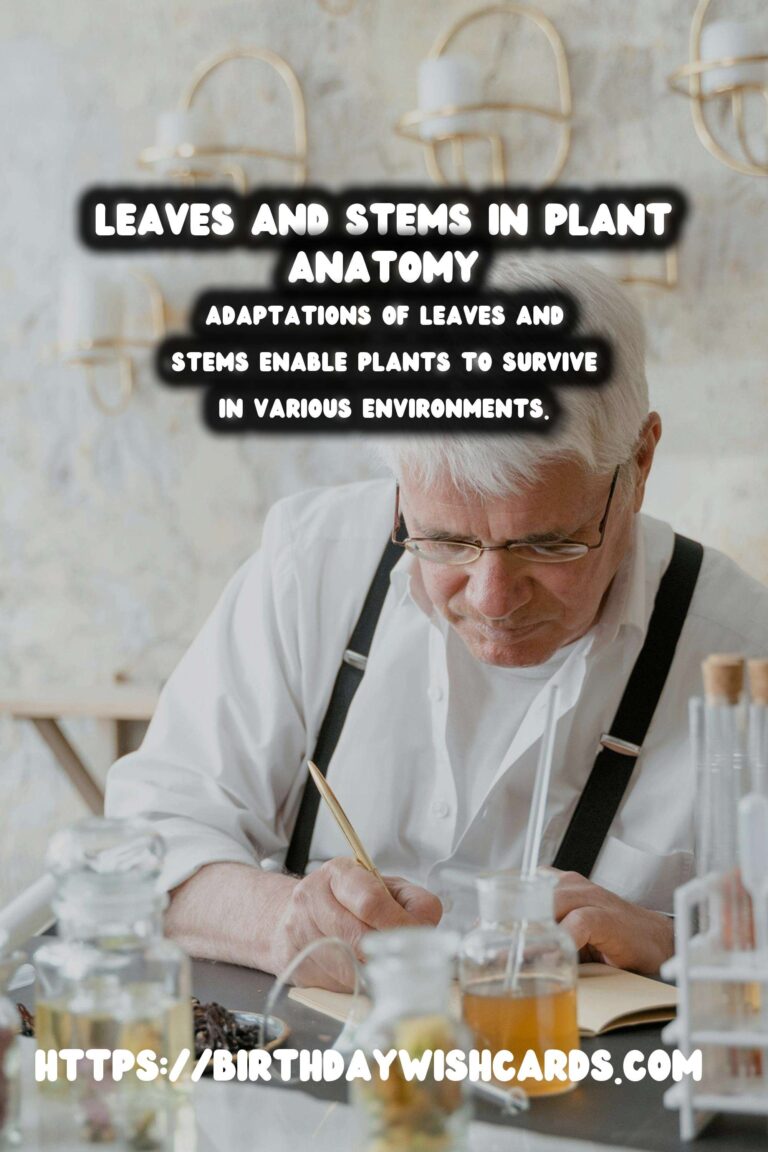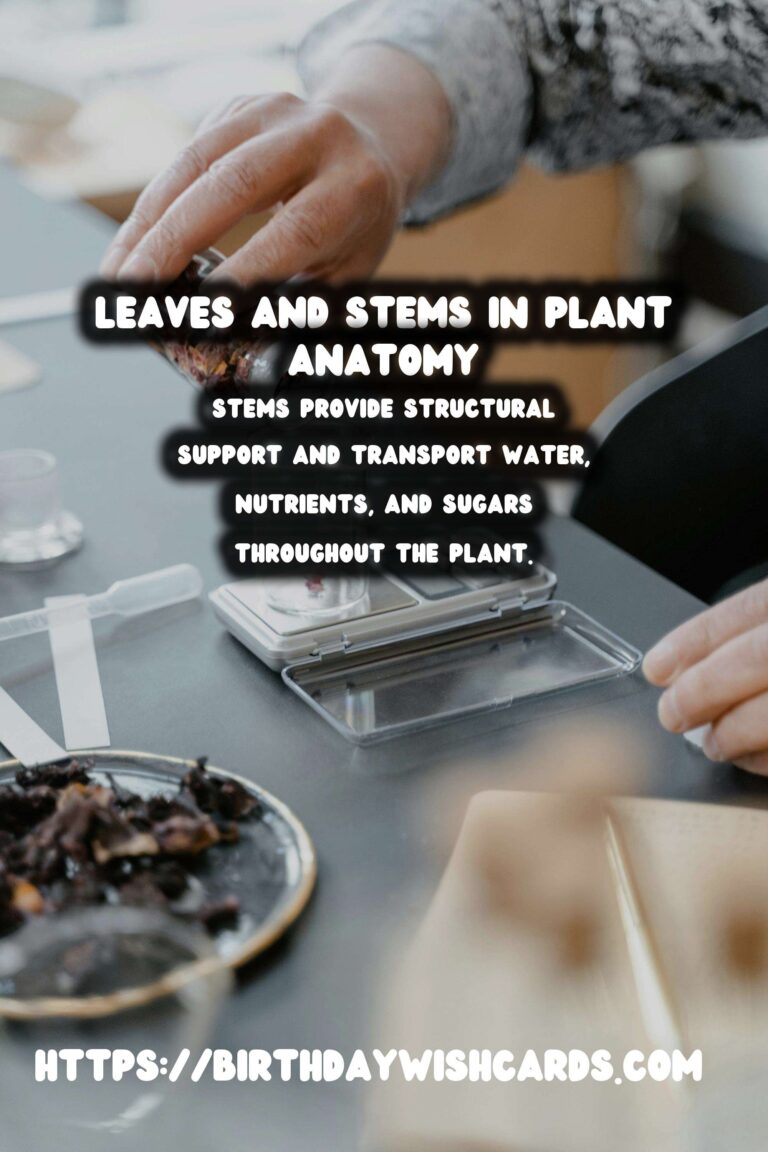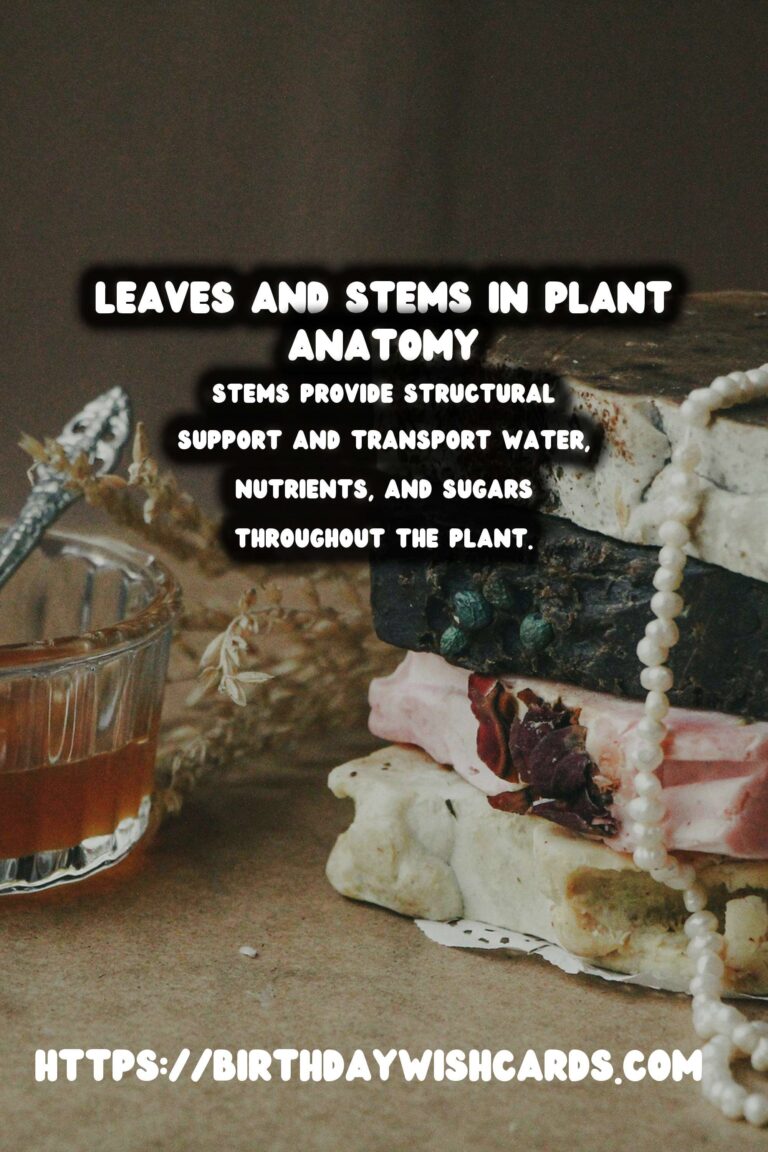
Plants are incredible organisms that form the backbone of life on Earth. They provide oxygen, food, and numerous resources that are essential for life. At the core of their functionality are two vital components: leaves and stems. Understanding the anatomy of these parts can unravel the mysteries of how plants grow and interact with their environment.
The Role of Leaves in Plants
Leaves are often referred to as the ‘food factories’ of plants. They play a crucial role in photosynthesis, the process by which plants convert light energy into chemical energy. The structure of a leaf is designed to maximize this process, with various parts working together to capture sunlight and facilitate gas exchange.
Photosynthesis: The primary function of leaves is to carry out photosynthesis. This process occurs mainly in the chloroplasts, which are abundant in the mesophyll cells of the leaf. Chlorophyll, the green pigment in these chloroplasts, captures light energy and uses it to convert carbon dioxide and water into glucose and oxygen.
Gas Exchange: Leaves also play a significant role in gas exchange. Tiny openings called stomata are scattered across the leaf surface, allowing for the exchange of gases. Carbon dioxide enters the leaf through these stomata, while oxygen and water vapor exit.
The Structure and Function of Stems
Stems are the plant’s support system, providing a framework that holds leaves, flowers, and fruits. They also play a vital role in the transport of water, nutrients, and sugars between the roots and leaves.
Support and Growth: Stems provide structural support, ensuring that leaves are optimally positioned to capture sunlight. This support is crucial for the plant’s growth and stability.
Transport System: The stem’s vascular system, composed of xylem and phloem, is essential for the transport of water, minerals, and food. Xylem carries water and dissolved minerals from the roots to the leaves, while phloem distributes the sugars produced during photosynthesis throughout the plant.
Adaptations of Leaves and Stems
Plants have evolved a variety of leaf and stem adaptations to survive in different environments. These adaptations enable them to conserve water, maximize photosynthesis, and protect against herbivores.
Leaf Adaptations: Leaves can vary greatly in size, shape, and texture. For instance, needle-like leaves in conifers reduce water loss in dry conditions, while broad, flat leaves in rainforests maximize light capture.
Stem Adaptations: Stems may become thickened and fleshy in cacti to store water, or they may grow underground as rhizomes or tubers to protect from environmental extremes.
The Importance of Leaves and Stems in Ecosystems
Leaves and stems are not only vital for the individual plant’s survival but also play a significant role in the ecosystem. They provide habitat and food for a multitude of organisms, from tiny insects to large herbivores.
Habitat and Food Source: Leaves offer a home and food source for numerous organisms. Insects, birds, and mammals rely on leaves for sustenance and shelter.
Ecological Balance: Stems and leaves contribute to maintaining ecological balance by recycling nutrients and supporting the food chain.
Conclusion
Understanding the anatomy and function of leaves and stems provides insight into the complex mechanisms that support plant life and, by extension, all life on Earth. Their roles in photosynthesis, support, and ecological interactions underscore their importance in the natural world.
Leaves are the ‘food factories’ of plants, playing a crucial role in photosynthesis. Stems provide structural support and transport water, nutrients, and sugars throughout the plant. Adaptations of leaves and stems enable plants to survive in various environments. Leaves and stems are vital for maintaining ecological balance and supporting diverse life forms. 









#PlantAnatomy #Leaves #Stems #Botany #Photosynthesis #Ecology




